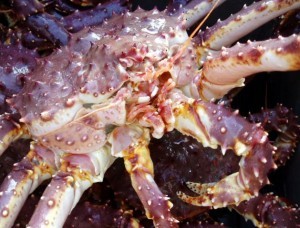
The U.S. House this week passed four bills aimed at beefing up research on ocean acidification.
“To have four bills at once pass through the House is a really heartening and important step forward for ocean acidification,” said Darcy Dugan, director for the Alaska Ocean Acidification Network.
The change in ocean chemistry is alarming to subsistence communities and the fishing industry. Dugan said acidification is directly tied to the global greenhouse effect: As carbon dioxide builds in the atmosphere, a portion of it is absorbed by the ocean.
“About one million tons of carbon dioxide will enter the ocean in one hour today,” she said. “And with this rate of increase, our oceans are about 30% more acidic than they were before the Industrial Revolution.”
That makes the water more corrosive to crab, clams and creatures at the bottom of the food chain, with impacts that reach all the way up.
“Some of the recent studies have shown a lowering of pH can reduce the ability, for example, of coho salmon to detect predators,” Dugan said.
Dugan is particularly interested in a bill that would direct the National Oceanic and Atmospheric Administration to assess coastal communities for their vulnerability to acidification. She says pH levels aren’t uniform along the coast or throughout the year. Dugan says some species will be hit harder than others, and communities will need to plan for those impacts and adapt.
“We like to think of ocean acidification research as putting headlights on a car,” Dugan said. “Can we look ahead to see what’s going to happen or what might happen in the future, so that we can provide information to Alaskans so that we can prepare and adapt?”
Congressman Don Young co-sponsored three of the House bills and Sen. Lisa Murkowski has a similar version in the Senate.
Liz Ruskin is the Washington, D.C., correspondent at Alaska Public Media. Reach her at lruskin@alaskapublic.org. Read more about Liz here.





